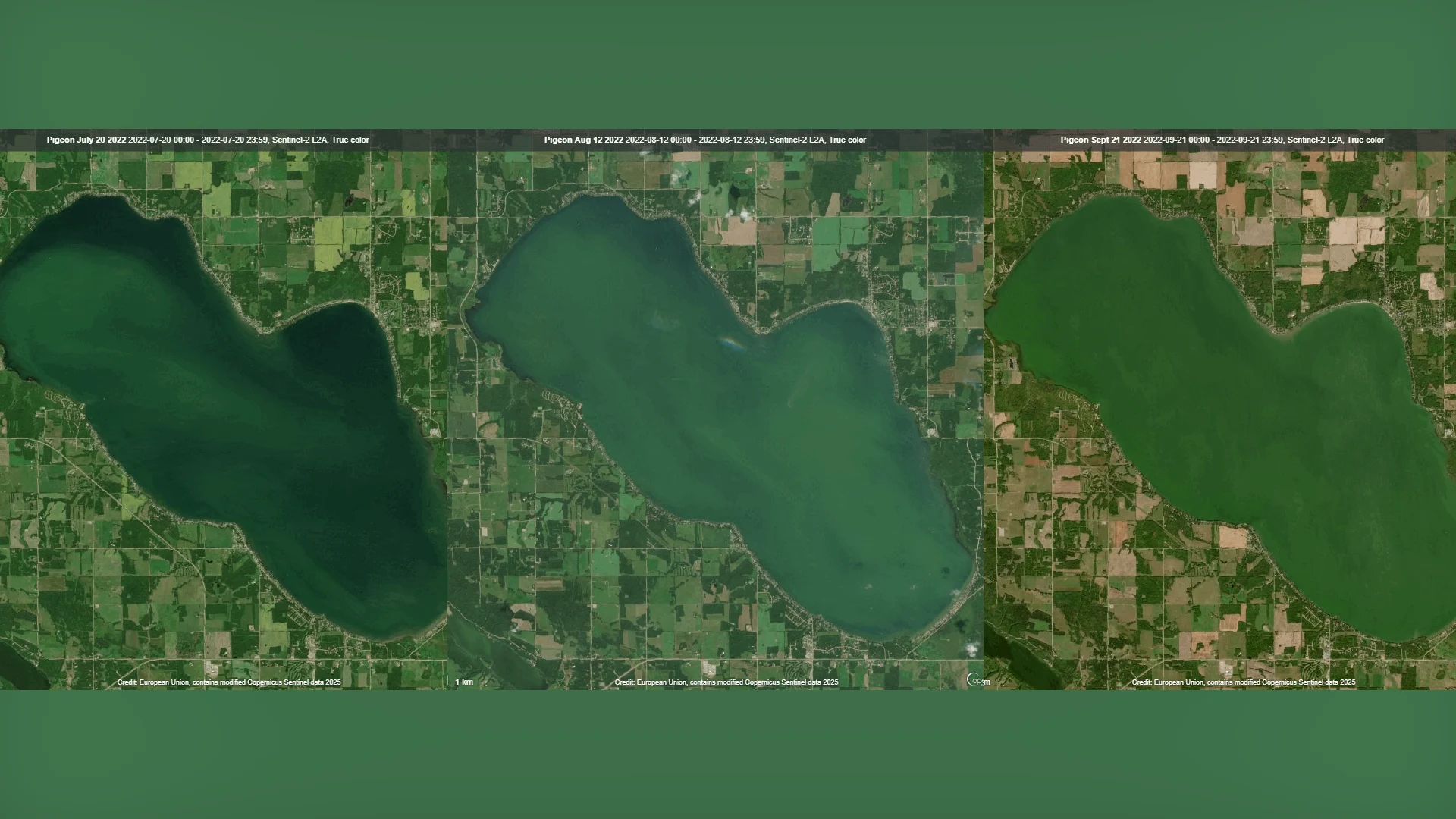
Can we forecast the next algae bloom? Researchers are working on it
There are documented cases of pet and livestock deaths attributed to blue-green algae ingestion every year
Blue-green algae are booming and blooming across Alberta this summer.
And, while that’s causing headaches (literally) for some, it's providing ample opportunity for researchers studying the algal blooms.
“Can you forecast when these blooms are going to happen?” said Rolf Vinebrooke, a University of Alberta biology professor overseeing a blue-green algae research project.
“That’s the big question everybody wants to know about.”
DON'T MISS: Blue-green algae can be tricky to spot, how to recognize it

An Alberta Health Services sign warns of blue-green algae at Pigeon Lake, one of nearly thirty lakes under AHS health advisories this summer. (Connor O’Donovan)
By the first week of August, Alberta Health Services (AHS) had issued health advisories for nearly 30 different lakes, warning of the presence of algae and risks from exposure that range from headaches and rashes, to diarrhea and potentially fatal liver damage.
Blue-green algae, formally known as cyanobacteria, take their colloquial name from the plant-coloured pigments produced during photosynthesis—and their blooms are nothing new to Alberta lakes.
In fact, sedimentary evidence suggests they’ve called Alberta home for thousands of years thanks to the province’s fertile landscape, which provides the nutrients like phosphorus that help them grow.
Years of heavy rainfall, like we’ve seen this year in parts of Alberta, can increase runoff into lakes and contribute to intensified algal activity (although many other factors also influence growth, such as sunlight, water temperature and wildlife activity).
While well known for their harmful effects, algae do provide several benefits to their local ecosystems.

Blue-green algae samples like these are grown and observed at the University of Alberta. (Connor O’Donovan)
Algal blooms produce organic carbon that helps form food sources for all forms of marine life.
They also sequester and store atmospheric carbon and nitrogen, which they can convert to usable forms like ammonia.
They can even be thanked for helping make life outside of water bodies possible. As one of the planet’s earliest life forms, their photosynthetic process helped contribute the oxygen to the atmosphere that helped create the ozone layer, which blocked UV radiation and allowed life on land to flourish.
MUST SEE: Blooming Peril: Should we be worried about algae blooms?
But, when cyanobacteria is present, algae also produce toxins that can irritate skin, impair nervous system functions and even cause liver failure.
According to Alberta Health Services, “contact can cause skin rashes and irritation, itchy eyes, and ear infections. Inhaling water may cause allergic-like reactions, runny noses or sore throats. Ingestion of toxins can cause a range of symptoms (e.g., hepatotoxic or neurotoxic effects, and even death).”
Vinebooke says there are documented cases of pet and livestock deaths attributed to blue-green algae ingestion every year.
They can also ultimately be harmful to marine life when they decompose. Oxygen-consuming microorganisms can greatly reduce dissolved oxygen as they break down the algae, creating dead zones where very little life exists.
That’s not to mention, the blooms are unsightly and can smell pretty bad too. All of this can make a day out at the lake undesirable or even dangerous.

Satellite imagery shows algal blooms at Pigeon Lake in Alberta. (Rolf Vinebrooke)
That’s why Vinebrooke and his colleagues are hard at work studying the blooms in the hopes they can one day be accurately forecasted, benefitting lake management practices and recreational activities.
The hope is that technology can improve to play an increasingly important role in observation and data collection.
Particularly, high resolution satellites can give a bird’s eye view of full bloom activity, which can be tough to encapsulate from the ground. Floating sensors are also being placed in lakes to track variables like temperature, pigment and nutrient levels, pH and more.
“If we can forecast, that will help with lake management processes,” Vinebrooke says.
“We can say ‘we know this is going to happen in two weeks or so, let’s prepare ourselves.’”
